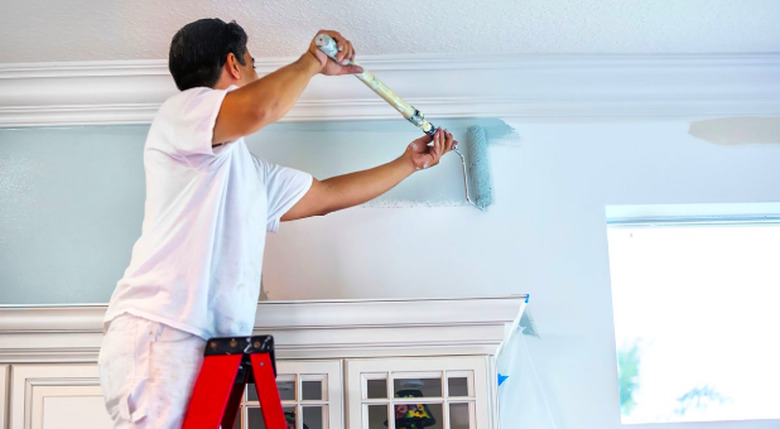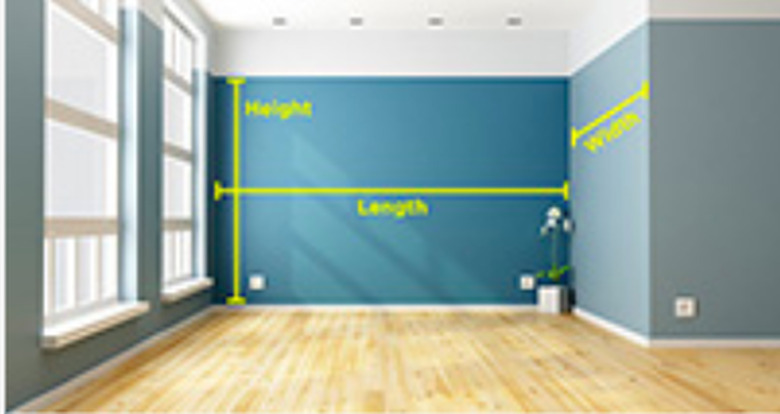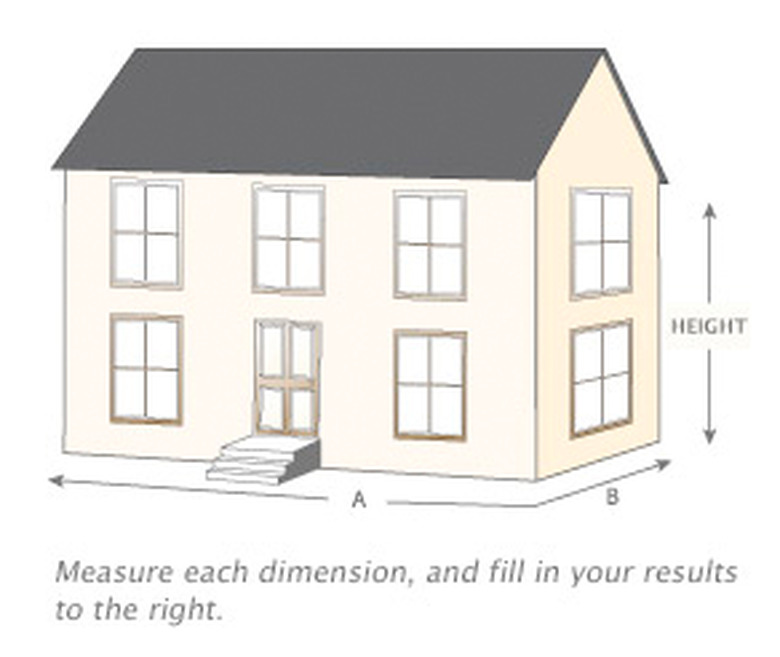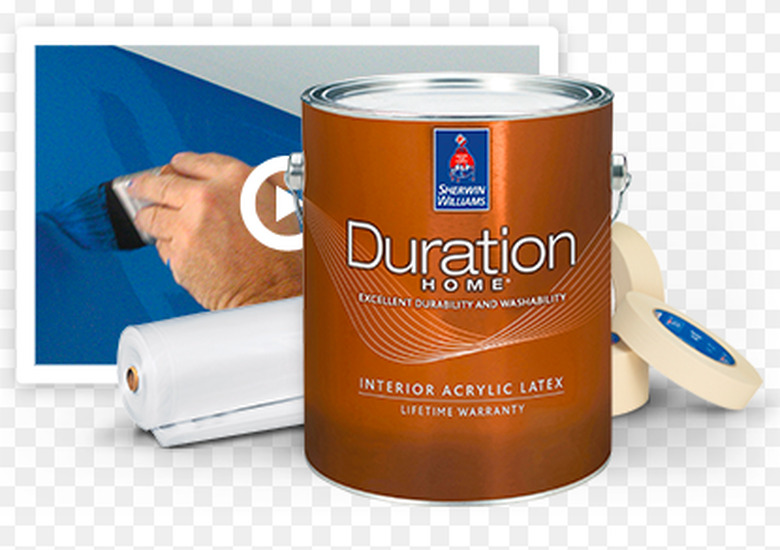How Much Paint Do I Need?
Whether you're a contractor estimating a painting job or a homeowner figuring out how much it will cost to paint a room yourself, the paint is the first thing to include in your calculations. Your total costs will depend how well the paint covers and the total area you need to paint. Calculating the amount of paint you need is important for two other reasons. You want to have enough material to finish the job, and you want to minimize the excess that will end up sitting in your shop or your basement.
The calculations start with measuring the dimensions of the surfaces you have to cover and doing a little math to find the total coverage area. This is basic math that you probably learned in school, though you may need a refresher. Once you determine the area you need to cover in square feet, you'll then divide this number by the coverage listed on the paint can label to determine how much paint you need to do the job, based on the number of coats, which is usually two. If you're on a budget, and you're painting a surface that needs priming, a simple trick may help you save on the paint you need for the topcoat. However, with paint mixtures that include primer becoming more common, you may not need to apply a separate primer coat at all.
Calculating Coverage Area
Calculating Coverage Area
If you're painting an interior room, the first measurement you need is the floor area, but don't mistake that for the coverage area of the room. Every room has four walls (at least) that extend to the ceiling, and the coverage area is the sum of the areas of those walls minus the areas of the windows, doors and other features that don't get painted. A simple formula for wall area for a basic rectangular or square room looks like this:
2 x (length of room x ceiling height)
+ 2 x (width of room x ceiling height)
= total square footage
For example, the wall coverage area in a 9- by 12-foot bedroom with a standard 8-foot ceiling is 2 x (12 x 8) + 2 x (9 x 8) = 336 square feet. Subtract the areas of the windows and doors and you'll probably get a little over 300 square feet of wall space.
The ceiling area is the same as the floor and, in this case, it adds 108 square feet to the coverage area. Keep the ceiling area separate if you're using a different paint for it, but if you're using one type of paint for the entire room, add the ceiling area to that of the walls.
The formula doesn't work for a room that has more than four walls, such as a kitchen with an alcove. In such a room, it's best to measure the length of each wall separately, multiply by the ceiling height to get its area, then add the areas of all the walls to get the total wall coverage area.
When calculating the coverage area on the exterior of a house, you obviously don't have to worry about a ceiling. Measure the length of the house and the distance to the roof line, multiply these numbers and double them. Perform the same operation using the width of the house and add the numbers together to get total area. Subtract the area of doors and windows (about 10 to 15 percent).
If the house has more than four walls, measure the length of each wall, multiply by the distance to the roof line to get the area of that wall. Add the areas of all the walls together. If your house has cables, first calculate the area of the rectangular part of the wall under each gable, then add the area of the gable. Since a gable is a triangle, its area is half its base times its height. The base is its width, and the height is the distance from the peak to the widest part.
Divide by the Coverage Area on the Container
Divide by the Coverage Area on the Container
Once you know the total area you have to cover with a particular type of paint, check the paint container for the coverage area, which is always listed. Divide the area you need to paint by the can coverage to get the number of containers you need for one coat. It's best to plan on applying two coats, even if you're using a self-priming product, so double the number of containers. You'll probably get a fractional remainder, but since you can't buy paint in fractions of containers, round up to the next whole number. This is better than rounding down, because it ensures you'll have enough paint to finish the job.
The coverage listing on paint containers is for a smooth surface, so if you're painting a textured surface, add a percentage to the number of containers you need. Ten percent is a realistic overage for textured walls and pre-painted wood walls. Textured surfaces absorb more paint than flat surfaces.
Don't Forget Primer
Don't Forget Primer
Instead of using self-priming paint for new drywall and unfinished wood, you might consider applying primer separately. Primer is specially formulated to seal wood and drywall, and it prevents dried paint from lifting and bubbling. You'll only need one coat, so divide the total coverage area by the listed coverage on the container, round up to the nearest unit and buy that number of containers. No need to double the number.
Tip
-
If you want to keep your costs down, a common painter's trick is to add colorant to the primer to tint it to a hue close to that of the wall color. This reduces the number of topcoats you need so you don't have buy as much of the more expensive paint.
-
If you find you need more than 4 gallons, you'll probably save money by buying a 5-gallon bucket, even if it means you'll have paint left over.
-
When painting interior trim, a quart of trim paint is usually enough for 3 to 6 rooms, depending on whether or not you paint the door faces. Exterior trim is wider, and there's more of it, so unless you're doing spot repairs, it's best to buy the paint in gallons. One gallon is usually enough for a single coat on all the exterior trim on an average house.



